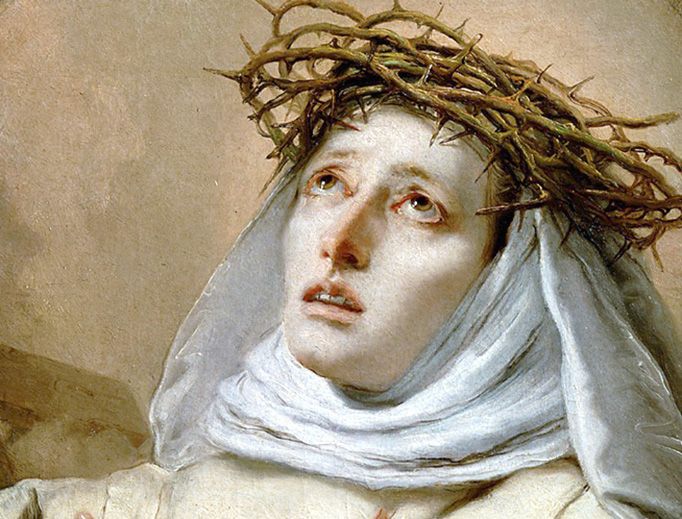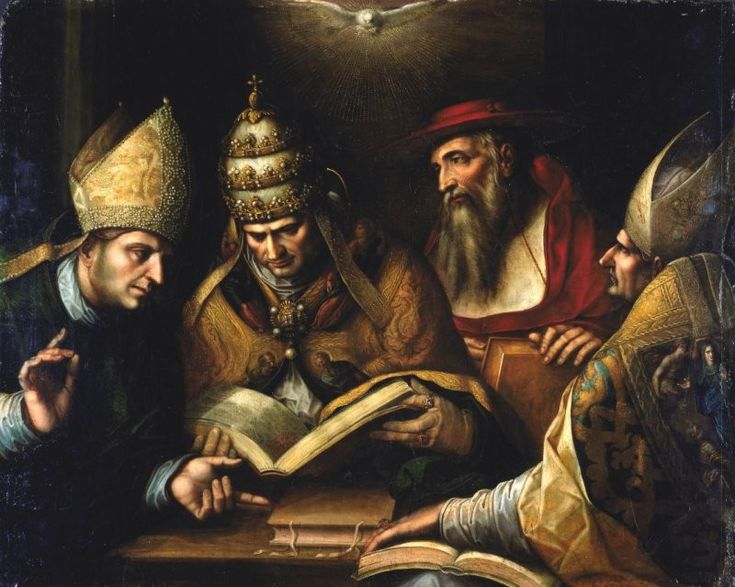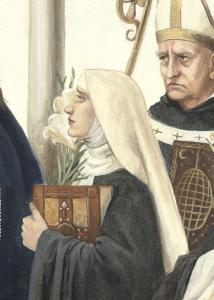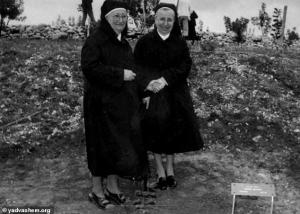“We’ve had enough exhortations to be silent. Cry out with a thousand tongues – I see the world is rotten because of silence.”
– Saint Catherine of Siena
In a world filled with corruption and conflict, the pursuit of truth should be every nation’s mission. Saint Catherine of Siena, a timeless figure whose unwavering dedication to truth remains an inspiration to this day, teaches us the invaluable lesson of embracing truth even in the face of adversity.

Born in the 14th century, Saint Catherine of Siena lived during a period of turmoil and discord within the Catholic Church – with her steadfast faith and indomitable spirit, she fearlessly confronted the powerful and advocated for the truth, even when it meant facing opposition and persecution. Her teachings remind us that seeking truth and standing firm in our convictions, even when it feels challenging or unpopular is very important.
The Historical Context of Conflict During Saint Catherine’s Time
During the 14th century, the Catholic Church was embroiled in internal conflicts and power struggles. There was a huge division within the Papal See, with rival factions vying for control and influence. This period, known as the Western Schism, saw multiple claimants to the papacy, leading to confusion and division among the faithful. It was in this tumultuous backdrop that Saint Catherine of Siena emerged as a powerful voice for truth and unity.

Saint Catherine witnessed first-hand the corruption and abuses within the Church. She saw how the pursuit of power and wealth had overshadowed the teachings of Christ. Despite these challenges, she remained steadfast in her commitment to truth and justice. Saint Catherine believed that returning to core values and embracing the truth of Christ’s teachings would renew the Church.
Saint Catherine’s Early Life and Spiritual Journey

Saint Catherine of Siena (born Caterina Benincasa) was born in 1347 in Siena, Italy. From a young age, she displayed a deep spiritual sensitivity and a strong desire to serve God. She dedicated herself to a life of prayer, fasting, and acts of charity. At the age of 16, she became a member of the Third Order of Saint Dominic, a lay religious order committed to a life of poverty, chastity, and obedience. Her spiritual journey led her to experience visions and mystical encounters with God. These experiences deepened her faith and fuelled her determination to bring about change within the Church. Saint Catherine believed that her visions were a divine calling to confront corruption and bring about reform.
Embracing Truth As A Core Value
Saint Catherine believed that truth was not just a concept to be understood intellectually, it was to be a lived reality that should be embraced in every avenue of life. She believed that the pursuit of truth required courage and a willingness to confront the lies and falsehoods that obscured it. Saint Catherine understood that the path of truth would not be easy, but she was willing to endure any hardship to defend it. Saint Catherine’s commitment to truth was exemplified in her interactions with those in power. She fearlessly confronted Popes, Bishops, and political leaders, urging them to abandon their self-interest and embrace the truth of Christ’s teachings. Despite facing opposition and ridicule, Catherine remained firm in her conviction that only by embracing truth the Church could be restored to its rightful glory.
Saint Catherine’s Role in Resolving Conflicts within the Catholic Church
Saint Catherine’s influence extended far beyond her personal encounters with powerful individuals. She played an instrumental role in resolving the Western Schism, a conflict that threatened to tear the Church apart. Through her letters, she tirelessly advocated for unity and reconciliation among the rival factions.

In 1376, Catherine made efforts to repair the rift between the northern Italian league in Florence and Pope Gregory XI. Since 1305, the papacy had caused conflict between the Italians and the French. The skirmish with the emperor and the chaos in Rome forced the pontiffs to take refuge in Avignon in southern France. Catherine, just like the Italians, she desired that the papacy return to Rome. Pope Gregory XI did not have a problem with the move; however, his powerful French advisers resisted the move.
Catherine led a campaign of letters to all parties and she offered to be the mediator. She wrote six times to Pope Gregory XI, urging him to leave Avignon go back to Rome to re-establish the papacy. She wrote:
“Since [Christ] has given you authority and you have accepted it, you ought to be using the power and strength that is yours. If you do not intend to use it, it would be better and more to God’s honour and the good of your soul to resign. If I were in your place, I would be afraid of incurring divine judgment. Cursed be you, for time and power were entrusted to you and you did not use them!”
Pope Gregory XI said the letters that Catherine sent to him had an intolerable despotic tone sweetened with expressions of her perfect Christian deference. After the encouragement she received from the Florentines, Catherine embarked on a peace-making mission to Avignon – fortunately, her efforts were not in vain. In 1377, Pope Gregory XI returned the papal seat to Rome from Avignon, a significant step toward ending the schism.
After Pope Gregory XI’s death, the Church once again fell into discord, with multiple claimants to the papacy. Saint Catherine, undeterred by the complexity of the situation, travelled back to Avignon to convince Pope Urban VI to pursue reconciliation and end the rival claims. Her efforts bore fruit – Urban VI initiated reforms and made efforts to restore unity within the Church.
Lessons from Saint Catherine’s Approach to Conflict Resolution
Saint Catherine’s approach to conflict resolution offers valuable lessons for us in the modern world. She teaches us the importance of seeking truth above all else. In a world where misinformation and half-truths abound, we must be willing to dig deeper and question the narratives that are presented to us. Saint Catherine’s example reminds us that the pursuit of truth requires courage and a willingness to challenge the status quo.
We can see how courageous Catherine was and how she willingly challenged the status quo. She wrote the following to the cardinals who abandoned the truth:
“This is not the kind of blindness that springs from ignorance. It has not happened to you because people have reported one thing to you while another is so. No, for you know what the truth is: it was you who announced it to us, and not we to you. Oh, how mad you are! For you told us the truth and you want yourselves to taste a lie! Now you want to corrupt this truth, and make us see the opposite, saying that you chose Pope Urban from fear, which is not so; but anyone who says it — speaking to you without reverence, because you have deprived yourselves of reverence—lies up to his eyes.”
Saint Catherine’s teachings are not confined to the historical context in which she lived. They are just as relevant and applicable in the conflicts we face in the modern world. Whether it is political divisions, religious disputes, or social issues, the principles of seeking truth, engaging in respectful dialogue, and standing firm in our convictions can guide us towards resolution and reconciliation. Saint Catherine teaches us to exercise moral courage.

Moral courage is a person’s ability to conquer their fear and hold up his or her principles; it is an inclination to do the right thing where wrong prevails. A person might be putting himself or herself in harm’s way but being able to fix a situation that could have probably caused serious harm gives a person a sense of peace.
Catherine was a laywoman who did not have any ecclesiastical authority within the Catholic Church and she was not born into a prominent family, therefore, she did not have any social status that gave her the voice that she had. She actually ran the risk of getting into serious trouble including being excommunicated; however, her faith, her conscience, and her will to do the right thing led her to advocate for peace and save an institution.
One person who demonstrated what moral courage was Mother Superior of the convent in Notre Dame de Massip in Caspdenac, Sister Denise Bergon. During a period when it was very dangerous to help the other person (particularly the Jews), Sister Denise put her life on the line and hid 83 Jewish children at the convent. She knew that if she did not hide them, they would end up going through the trauma of being “reprogrammed”. When parents would go into hiding, they would separate from their children – the children would then go into the system where they would be forced to forget their Jewish identity, including their names and have to re adapt to new cultural dynamics and new families.

Sister Denise’s moral compass forced her to challenge the status quo – she ended up going into Capdenac’s forests and gorges and collecting the Jewish children who were hiding there and taking them to the convent. When it was finally safe for the children to come out of hiding, they were eventually reunited with their families. Sister Denise’s moral courage helped to save lives and families.
The Enduring Legacy of Saint Catherine of Siena
Saint Catherine of Siena’s impact extends far beyond her own lifetime. Her unwavering dedication to truth and justice continues to inspire individuals around the world. The writings and teachings of Saint Catherine have been preserved and studied throughout the centuries. Her works, including “The Dialogue” and her letters, offer valuable insights into her spiritual journey and her approach to conflict resolution. Scholars and theologians continue to draw from her wisdom, finding guidance and inspiration in her words.













